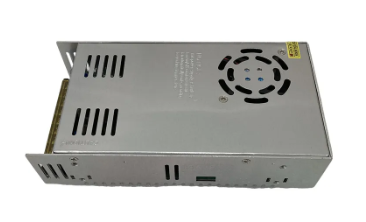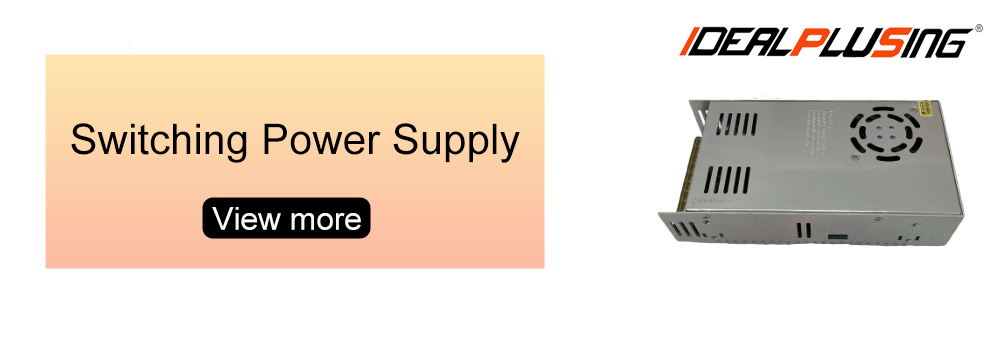A power supply is an electrical device that converts the electric current that comes from a power source to the voltage value necessary for powering a load, like a motor or an electronic device. There are two main designs for power supplies: a linear power supply and a switching power supply.
Linear power supply designs use transformers to step down the input voltage. The voltage is then rectified and converted to direct current, and filtered to improve waveform quality. Linear power supplies use linear regulators to maintain a constant voltage at the output. These linear regulators dissipate excess energy in the form of heat.
Switching power supplies are a relatively new development in power supply design technology. They effectively address many issues associated with linear power supplies, such as large transformer size and low voltage regulation efficiency. In the operation of a switching power supply, the input voltage does not undergo direct step-down conversion as in a linear power supply. Instead, it undergoes rectification and filtration. The next step in the process is the conversion of the DC voltage into high-frequency pulse signals by a high-frequency switching (chopping) circuit. The high-frequency signal is then filtered and rectified again at the output, thereby converting it into a stable DC output voltage.

For many years, linear AC/DC power supplies have been used to convert alternating current (AC) from the public grid into direct current (DC) voltage for household appliances and lighting. High-power applications are increasingly demanding smaller power supplies, which has led to a shift in focus for linear power supplies, now being used primarily in specific industrial and medical applications. However, due to their low noise levels, these applications still require linear power supplies. Switching power supplies have replaced linear power supplies due to their smaller size, higher efficiency and ability to handle high power. The figure below illustrates the general conversion process of a switching power supply from AC to DC.

Linear power supplies consist of mains frequency transformers, output rectifier filters, control circuits and protection circuits. In a linear power supply, alternating current (AC) is first stepped down by a transformer, then rectified and filtered by a rectifier circuit to produce an unstable direct current (DC) voltage. In order to achieve high-precision DC voltage, it is necessary to adjust the output voltage via voltage feedback. This power supply technology is highly mature, capable of achieving very high stability with minimal ripple, and does not produce the interference and noise associated with switching power supplies. However, there are some drawbacks to consider, including the need for large and bulky transformers, as well as substantial volume and weight of the required filter capacitors. Additionally, the voltage feedback circuit operates in linear mode, resulting in a certain voltage drop across the adjustment transistor. When larger working currents are output, this can lead to excessive power consumption in the adjustment transistor, low conversion efficiency, and the need for large heat sinks. This type of power supply is not well-suited to the needs of computers and similar devices, and it will gradually be replaced by switching power supplies.
Switching power supplies primarily consist of input grid filters, input rectifier filters, inverters, output rectifier filters, control circuits, and protection circuits. Their functions are as follows:
1. Input grid filter: Eliminates interference from the grid, such as that caused by motor starts, appliance switching, or lightning strikes, while also preventing high-frequency noise generated by the switching power supply from propagating into the grid.
2. Input rectifier filter: Rectifies and filters the input grid voltage to provide a DC voltage for the converter.
3. Inverter: The key component of the switching power supply. It converts the DC voltage into high-frequency AC voltage and isolates the output section from the input grid.
4. Output rectifier filter: Rectifies and filters the high-frequency AC voltage output by the converter to obtain the required DC voltage, while also preventing high-frequency noise from interfering with the load.
5. Control Circuit: Monitors the output DC voltage, compares it with a reference voltage, and amplifies the signal. It modulates the pulse width of the oscillator to control the converter and maintain stable output voltage.
6. Protection Circuit: When the switching power supply experiences overvoltage, overcurrent, or short circuits, the protection circuit shuts down the power supply to protect the load and the power supply itself.
When selecting a switching power supply, there are several key factors to consider. These considerations will ensure that the power supply you choose is suitable for your specific application and meets your requirements.The primary factor to consider is power output. It is essential to determine the power requirements of your device or system and ensure that the switching power supply you select can consistently provide that power. It is imperative to consider both the maximum and minimum power requirements to ensure stability and efficiency.
Another key consideration is the input voltage range. It is crucial to select a switching power supply that meets the specific input voltage requirements of the various devices and systems, as these can differ significantly. This will ensure compatibility and prevent any potential damage to the device due to incorrect voltage levels.The next step is to consider the efficiency of the switching power supply. When selecting a power supply, it is advisable to opt for one with a high efficiency rating. This will help to minimise energy wastage and heat generation. A more efficient power supply has two key benefits: it saves energy costs and extends the lifespan of equipment. Furthermore, it is imperative to assess the reliability and durability of the switching power supply. When selecting a power supply, it is advisable to opt for one that is composed of high-quality components and has a proven track record of reliability. Factors to consider include temperature resistance, shock and vibration resistance, and any professional certifications or ratings indicating robustness and durability.
The above is an analysis of the differences between switching power supplies and linear power supplies. Understanding their differences and characteristics can help you choose the most suitable power supply type for your specific application needs. Whether you are looking for high efficiency or stability, choosing and using the appropriate power supply is crucial for the power consumption and performance of electronic devices.
If you need to purchase a switching power supply, have any questions about its use, or need more resources for further research, please let me know your thoughts in the comments below or send us an enquiry via the contact page.







